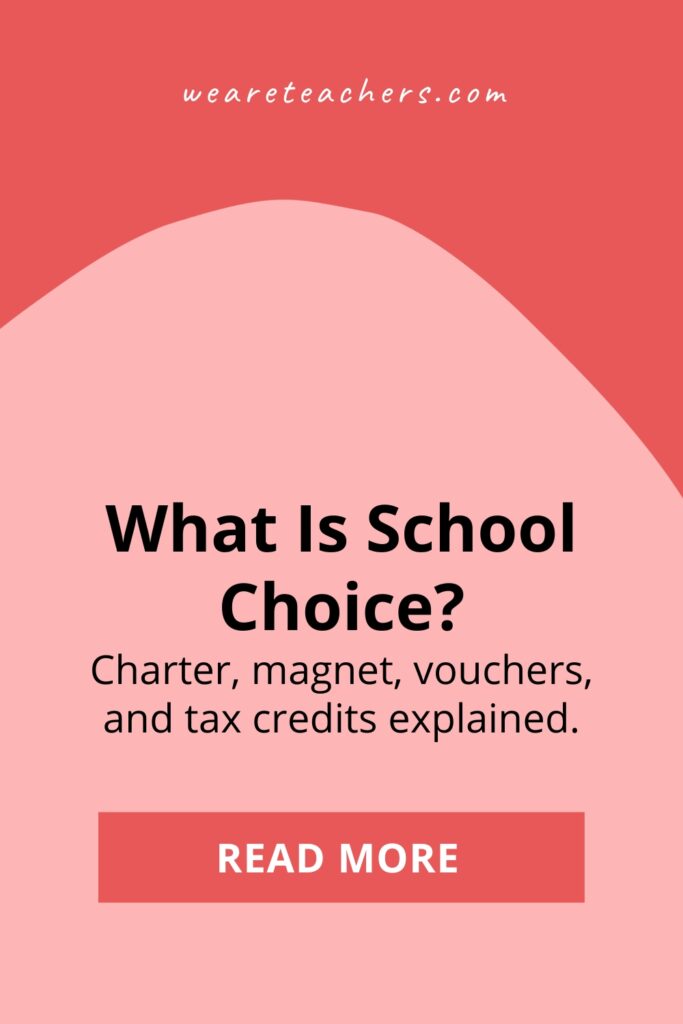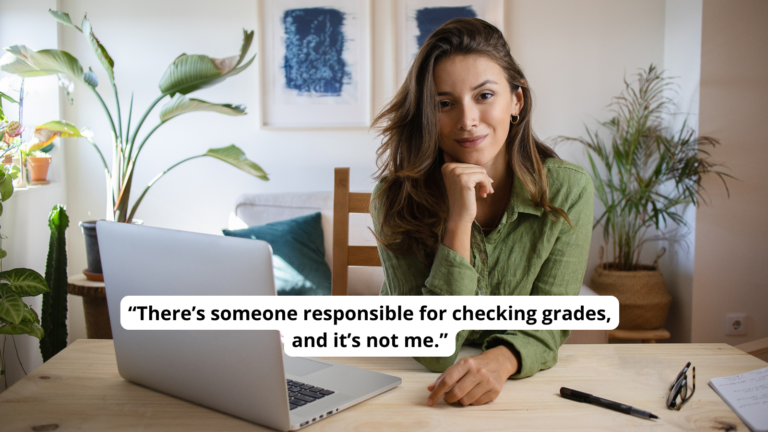“School choice” is the term used for options that allow families to choose where they send their children to school in addition to their neighborhood school. These options range from charter and magnet schools to voucher programs that provide funding to pay for private schools and even homeschooling. School choice is a topic of debate for state legislatures and education policymakers, and it can be a hot topic among educators and families. Chances are, you have school choice options in your state and district as well. So what is school choice? And what are the pros and cons?
What is the history of school choice?
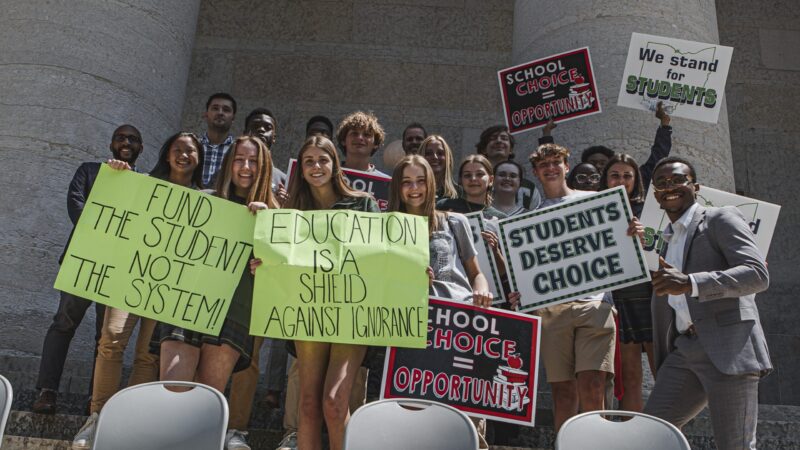
School choice is not new. It has been in the education debate for decades, and since it was first proposed, school choice has steadily expanded. In 1955, economist Milton Friedman suggested that letting parents use public school funds through school vouchers to choose their child’s school from among various options (public, private, religious) would improve public schools overall.
At times, school choice policies were used to propagate segregation. In 1956, Virginia’s Stanley Plan used vouchers to finance segregated private schools. Other states followed suit until the practice was disallowed by Griffin v. County School Board of Prince Edward County in 1964.
In the 1990s, new options were created, including a school voucher program in Milwaukee in 1990, the first charter school in Minnesota in 1992, and California’s District of Choice program that started in 1993.
In 2002, the Supreme Court decided that school vouchers can be used to pay for education in any school of a parent’s choosing. By 2009, school choice was a partisan issue with Republican support. The Obama administration, though Democratic, provided funding to states and districts to increase the number of charter schools, an initiative Republicans continued. In 2011, Republican governors in 12 states expanded school choice.
Charters and voucher programs have steadily expanded. Now, there are 10 states that offer taxpayer-funded school choice to attend private schools through voucher or similar programs.
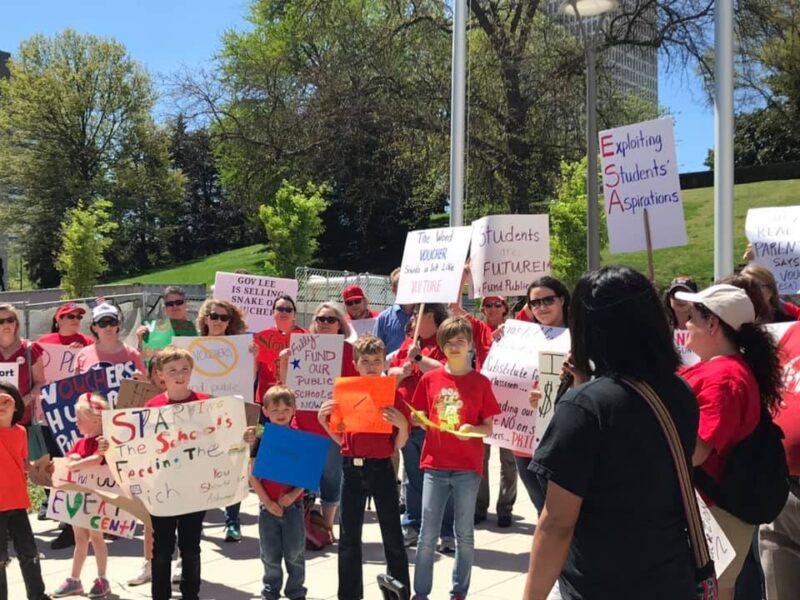
What is happening with school choice now?
The number of students taking advantage of school choice increased from 200,000 in 2011 to 621,000 in 2021. The pandemic accelerated school choice as parents were increasingly dissatisfied with school policies and curricula. States continue to pass bills that expand and refine school choice options.
Currently, all states have some school choice options and they are expanding. In 2023, six states signed school choice legislation. Arkansas, Florida, Iowa, Utah, South Carolina, and Oklahoma signed laws that make some, if not all, students eligible for vouchers or a tax credit that can be used on private school tuition, textbooks, or transportation. Also in 2023, North Carolina’s legislature signed a budget that would fund the largest school voucher program in the country.
As a policy discussion, legislative decision, and reality for teachers and families, school choice is here to stay.
What are the types of school choice?
The options for school choice depend on where you live. Some districts have a variety of options, including vouchers or scholarships, magnet schools, and charter schools, while others have few options aside from their neighborhood school. The main types of school choice are programs that provide parents with funds to choose their school (using vouchers and tax credits), schools that parents can enroll in outside of their neighborhood schools (charter schools, magnet schools, virtual schools), and opting out of public education entirely (homeschooling).
Voucher Programs
There are 25 school voucher programs across 16 states. School vouchers allow parents to get public funds—the public money that would have gone to their own child’s education—and spend it on private school. School vouchers can often be spent on either religious or non-religious private schools.
Tuition Assistance for Private School
All states have some sort of tuition assistance, though it ranges from state to state. Some states have tuition provided through state programs, while others have privately funded scholarships, like a tax-funded scholarship.
This video explains tax-funded scholarships (by pro–school choice organization EdChoice):
Charter Schools
Charter schools are now permitted in all but four states (New Hampshire, North Dakota, South Dakota, and Nebraska). Between 2010-2011 and 2021-2022, the number of charter schools in the United States increased from 5,300 to 7,800. In the same period, the number of traditional public schools decreased from 93,500 to 91,400. So, the percent of schools that are charters increased from 5% to 8%.
Also in that time, public charter enrollment nearly doubled from 1.8 million to 3.7 million students. And the enrollment of students in traditional public schools decreased. So, the percent of students who attended charter schools increased from 4% to 7%.
Read more: What Are Charter Schools?
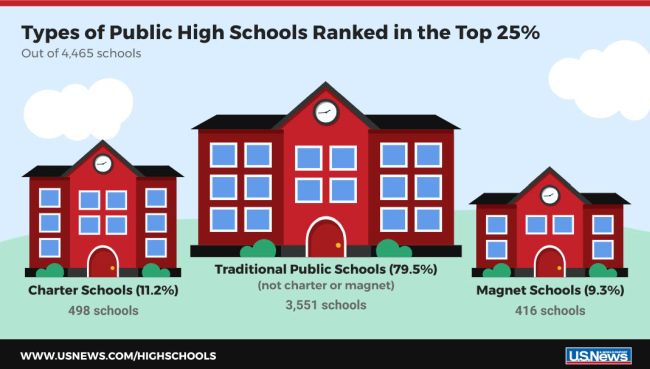
Magnet Schools
Magnet schools are public schools that are included in a district but have specialized programming, like a STEAM school or Montessori school. All states have magnet schools, with a total of 4,000 magnet schools nationwide. And more than 3.5 million students attend magnets.
Read more: What Are Magnet Schools?
Virtual Schools
Online public schools are a relatively new option. Most states—35 states and D.C.—have online options, including virtual public schools or charter schools.
This Connections Academy survey provides some insight into why families choose virtual schools:
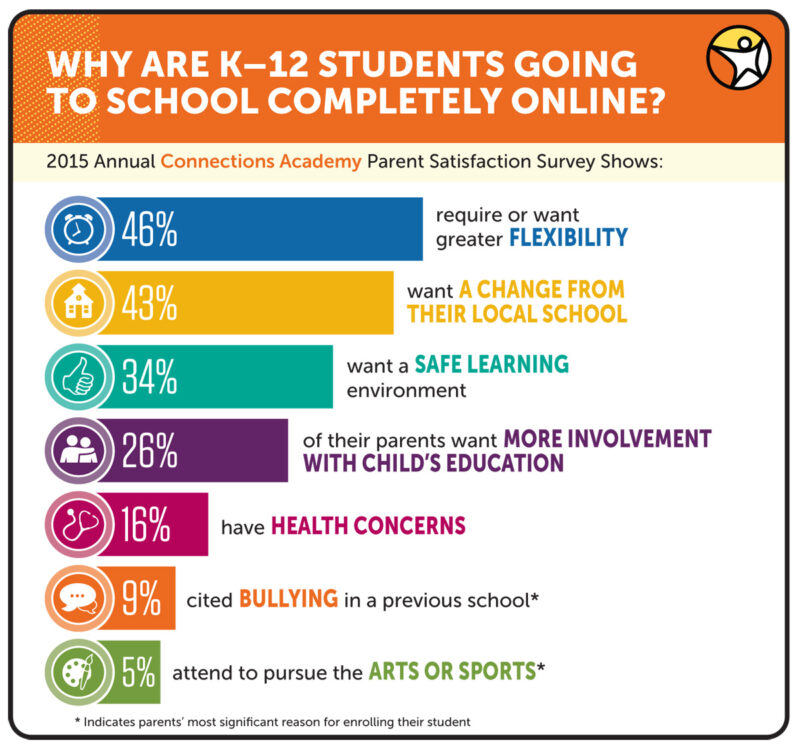
Homeschooling
All states allow homeschooling, which is parent/guardian-led education in the home. The rate of homeschooling has increased in recent years, spurred on by the COVID-19 pandemic. According to the National Home Education Research Institute, more than 3 million students are currently homeschooled.
The Debate Over School Choice
Teachers, parents, and policymakers have debated whether school choice is good for public education and students since the first policies came about. The jury is still out—there are arguments for both sides. John Singleton, associate professor of economics at the University of Rochester, analyzed school choice and identified pros and cons.
School Choice: Pros
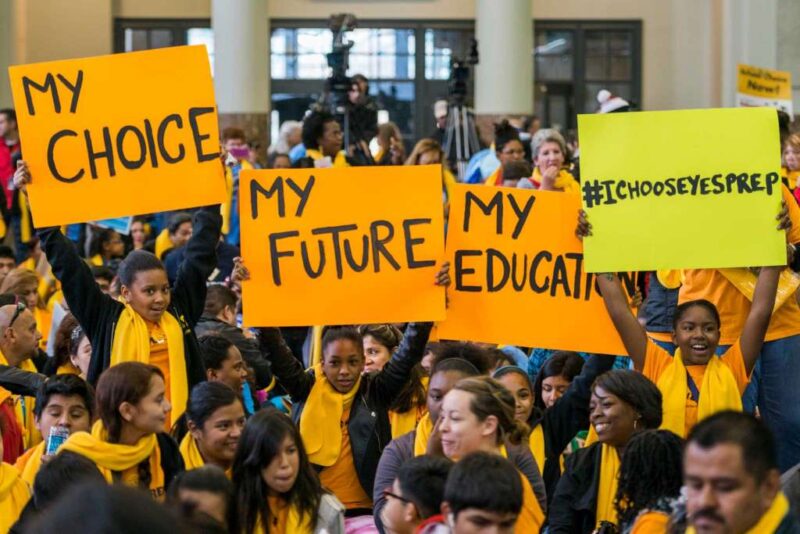
Advocates argue that school choice policies and options benefit individual families and the education system as a whole. For example, if a child is assigned to a school that is not a good fit for them, school choice options allow them to find a school that is a better fit for safety, education, or value reasons.
Advocates also argue that school choice creates competition in public education. Singleton argues that when there is more competition in public education, there are incentives for public schools to improve, which benefits all students. How this actually plays out is still a question in research.
Also, advocates argue that charter schools do tend to improve performance at nearby schools, likely because of spillovers and market competition.
School Choice: Cons
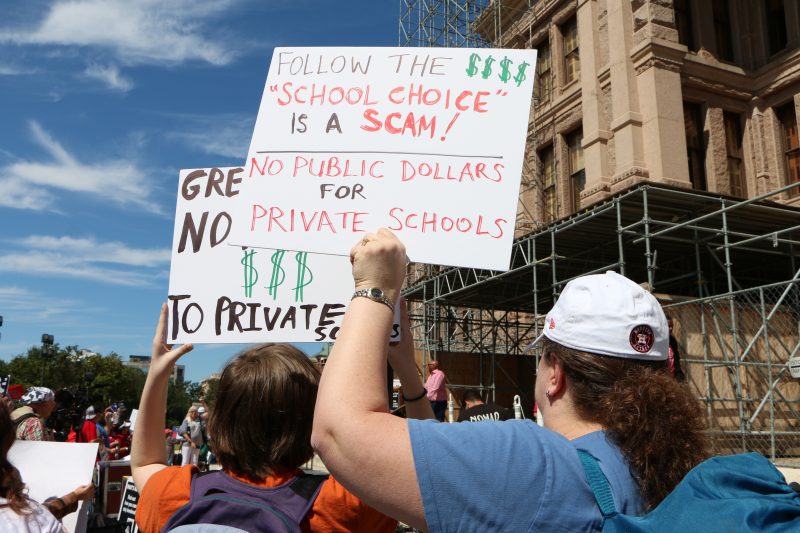
The main argument against school choice is that the policies and practices direct money away from public schools, which weakens an already underfunded system.
Opponents of school choice argue that private school vouchers are not actually benefitting the students they were intended to help. They argue that the students who actually use vouchers tend to be more advantaged, higher-performing students, not the lower-income students that vouchers were intended to help. Students who use vouchers are typically already enrolled in private school, and even with vouchers, attending private school costs thousands of dollars each year, making the option out of low-income families’ reach. And for many students, just because a voucher program is available does not mean that there is a private school they can attend in their area.
Opponents to school choice also argue that charter schools do not necessarily outperform traditional public schools and that charters are not universally better than public schools, and in some cases they are worse.
What about school choice produces results?
Researchers have studied school choice and found benefits, from improving student math and reading scores to increased graduation rates to improving racial integration.
The Cato Institute examined two ways that school choice could provide benefits:
- An increase in the supply of generally better schools in an area
- Creating a better match between teachers and students
When there are more schools in an area, there is more competition and all schools will work to be better. The idea is basic competition: When schools are not a monopoly, and families can choose their schools, then schools will have to compete, and that competition will make education better for everyone.
Parental choice is the other big influence. The idea is that when parents can choose, and education goes from being a one-size-fits-all approach to more targeted instruction and fit for each student, then students will more naturally do well.
There is still a lot to learn about what makes school choice effective or not effective in different situations. And for each of the outcomes of school choice, it is difficult to identify an exact cause.
School Choice Resources
Check out these research reports and articles for more information about school choice.
- The Education Commission of the States School Choice Brief
- Evidence-to-Impact Collaborative School Choice in K-12 Education Report
- Education Next: As Private-School Choice Spreads: Implementation Is Imperative
- Education Week: School Choice
What are your experiences with school choice? Come share your experiences and ask for advice in the We Are Teachers HELPLINE group on Facebook.
Plus, check out How Many Schools Are in the U.S. (And More Interesting School Statistics).
